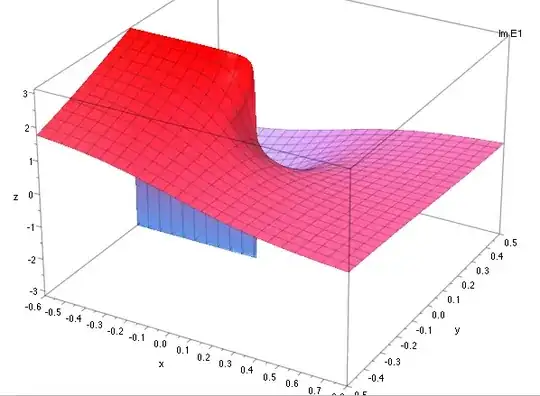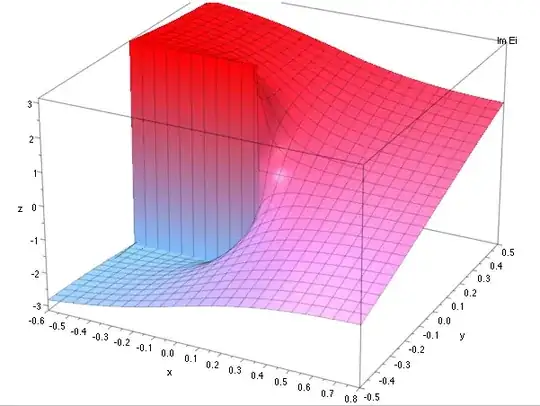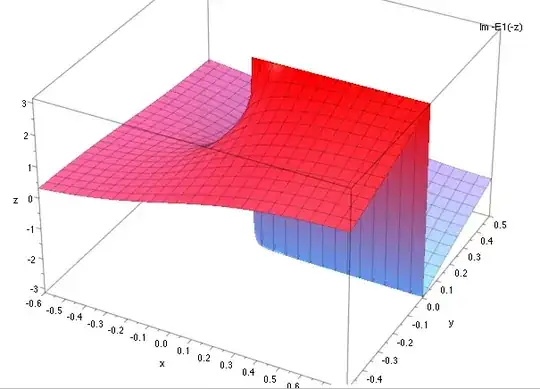I'm confused by the two online references shown below. To me, they give different areas of validity of writing an exponential integral as sum of integralsinus and -cosinus.
On this Wiki page, I find the following:
Function ${\rm E}_1(z) = \int_1^\infty \frac {\exp(-zt)} {t} {\rm d} t \qquad({\rm Re}(z) \ge 0)$ is called exponential integral. It is closely related with ${\rm Si}$ and ${\rm Ci}$:
${\rm E}_1( {\rm i} x)= i\left(-\frac{\pi}{2} +{\rm Si}(x)\right)-{\rm Ci}(x) = i~{\rm si}(x) - {\rm ci}(x) \qquad(x>0)\;\;\;\;\;\;\;\;\;\;\;\; (1) $
As each involved function is analytic except the cut at negative values of the argument, the area of validity of the relation should be extended to ${\rm Re}(x) > 0$. (Out of this range, additional terms which are integer factors of $\pi$ appear in the expression).
Contrary, at least to my understanding, on Wolfram's page, I find:
The exponential integral of a purely imaginary number can be written $${\rm Ei}(ix)={\rm ci}(x) + i[\pi/2 + {\rm si}(x)]\;\;\;\;\;\;\;\;\;\;\;\; (2)$$ for $x>0$ and where ${\rm ci}(x)$ and ${\rm si}(x)$ are cosine and sine integral.
Despite their similarity, it might be that the two sites are not talking about the same thing, because adapting the relation ${\rm E}_1(x)=-{\rm Ei}(-x)$ for the argument $ix$ and applying it to $(2)$ gives: $$ \begin{eqnarray*} -{\rm Ei}(-ix)=-\left({\rm ci}(-x) + i\left[\pi/2 + {\rm si}(-x)\right]\right). \end{eqnarray*} $$ Further using
${\rm si}(x)={\rm Si}(z)-\pi/2$ [1] (they really write ${\rm Si}(z)$, but I think it's OK to put $x$ for $z$, right? ),
${\rm Si}(-x)=-{\rm Si}(x)$ [2] and
I get $$ \begin{eqnarray*} -{\rm Ei}(-ix)&=&-\left({\rm ci}(-x) + i{\rm Si}(-x)\right)&&\\ &=&-\left({\rm Ci}(x) - i{\rm Si}(x)\right)&&\\ &=& i{\rm Si}(x)-{\rm Ci}(x)&\neq&{\rm E}_1( {\rm i} x). \end{eqnarray*} $$ So $(1)$ and $(2)$ don't match via my approach: $-i\frac{\pi}{2}$ is missing. I think I made a mistake somewhere and I still asume that they are talking about the same thing.
If not, I would be interested to know, why the area of validity is different in both cases. Or is Wikipedia wrong?


